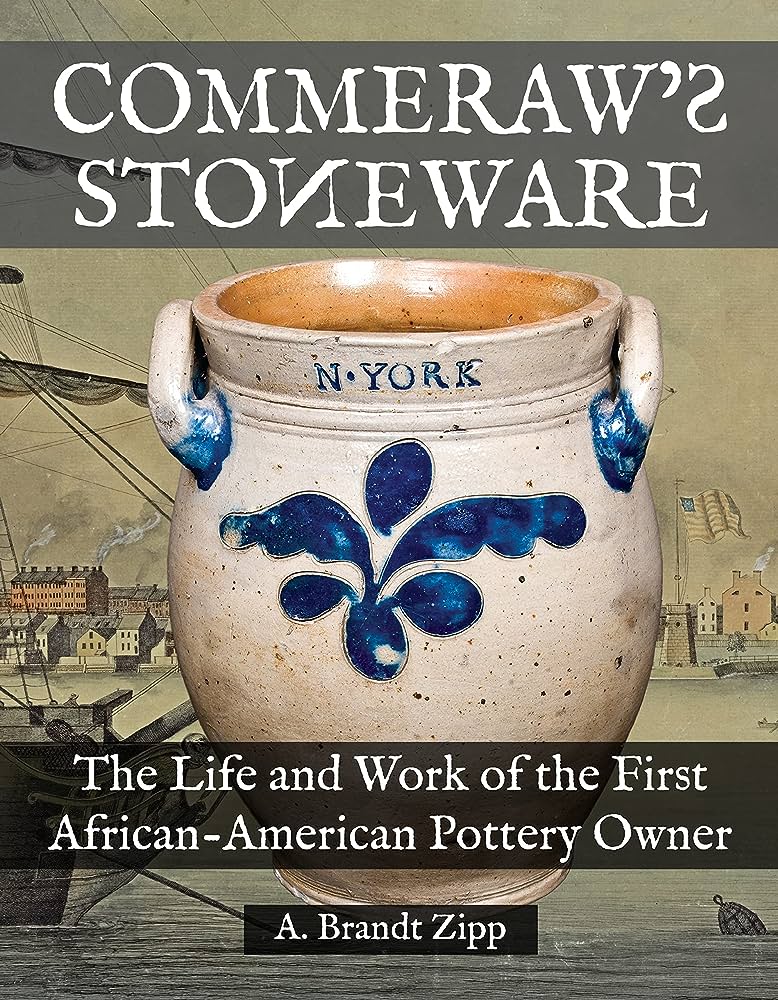Welcome to 19th Century, where we delve into the history of that fascinating era! In this article, we explore the devastating impact of cholera during the 19th century and uncover the shocking number of lives lost to this deadly disease. Join us on this journey through time as we shed light on this tragic chapter of history.
Cholera in the 19th Century: A Devastating Toll on Human Lives
Cholera in the 19th Century: A Devastating Toll on Human Lives
Cholera, a highly contagious bacterial infection, wreaked havoc on human lives during the 19th century. Originating in India and spreading through trade routes, the disease quickly reached epidemic proportions.
The impact of cholera was magnified by poor sanitation conditions in urban areas. Overcrowded cities with inadequate sewage systems provided the perfect breeding ground for the disease. Cholera thrived in contaminated water sources, making individuals vulnerable to its transmission through oral-fecal route.
Once infected, individuals experienced severe diarrhea and vomiting, which led to dehydration and electrolyte imbalance. Without proper medical intervention, cholera had a mortality rate as high as 50-60%. The disease spared no age group or social class, affecting both the wealthy and the impoverished.
Cholera outbreaks often triggered panic and fear among communities. The lack of understanding about the disease’s cause and treatment contributed to widespread apprehension. Governments and health authorities struggled to contain the spread of cholera, resorting to quarantines, isolation measures, and public health campaigns.
With the advancements in medical science and improvements in sanitation and hygiene practices, the devastating toll of cholera gradually diminished over time. However, the disease left an indelible mark on 19th-century history, serving as a reminder of the urgent need for public health reforms.
Cholera in the 19th century serves as a stark reminder of the devastating impact of infectious diseases on human lives. It highlights the importance of adequate sanitation, clean water sources, and access to healthcare in preventing and combating such epidemics.
Comparison: Worst Pandemics & Epidemics
Let’s Look At the Gruesome World of Victorian Medicine
How many people died from cholera in the 1900s?
During the 19th century, cholera epidemics were a significant health concern. While there isn’t an exact count of how many people died from cholera in the 1900s, it is estimated that millions of deaths occurred globally during that period. Cholera is a highly contagious and often deadly disease caused by the Vibrio cholerae bacterium. It spreads through contaminated water and food, primarily in unsanitary conditions.
One of the most devastating cholera outbreaks in history was the third pandemic, which originated in India in the 1850s and spread across continents. Europe, North America, Africa, and Asia were all affected by this global epidemic, resulting in millions of deaths. The exact number of fatalities is challenging to determine due to limited record-keeping in some regions, but it is undoubtedly significant.
Improved hygiene practices, better sanitation systems, and advancements in medical understanding eventually led to a decline in cholera cases in the late 19th century. The development of vaccines and the implementation of public health measures further contributed to the control of cholera outbreaks. However, sporadic cases and smaller-scale outbreaks continued to occur, particularly in areas with inadequate sanitation infrastructures.
Overall, cholera had a profound impact on global health and mortality rates during the 19th century. Its devastating effects led to advancements in public health measures and sanitation practices, ultimately reducing the frequency and severity of cholera outbreaks in subsequent centuries.
What was the death toll from cholera in 1850?
The death toll from cholera in 1850 was devastating. Cholera was a severe and highly contagious disease that spread rapidly during the 19th century. In 1850, it reached epidemic proportions in many parts of the world, including Europe and North America.
Unfortunately, there is no exact global death toll available for cholera in 1850. This is because record-keeping and data collection were not as organized or comprehensive as they are today. Furthermore, cholera outbreaks often hit impoverished areas the hardest, where access to healthcare and accurate record-keeping was limited.
However, it is estimated that the death toll from cholera in 1850 was in the hundreds of thousands. Some of the hardest-hit regions include India, Southeast Asia, and parts of Europe, including England. For example, in England alone, the cholera epidemic claimed an estimated 53,293 lives between 1848 and 1854.
These high death tolls were largely attributed to poor sanitation and lack of understanding about the disease at the time. Cholera is primarily spread through contaminated water, and in the 19th century, hygiene practices and sewage systems were often inadequate. Additionally, medical knowledge and treatment options for cholera were limited, making it difficult to effectively combat the disease.
Cholera outbreaks in the 19th century played a significant role in promoting public health reforms and improvements in sanitation infrastructure worldwide. These efforts eventually led to a decline in cholera-related deaths in subsequent years.
Was cholera deadly in the 1800s?
Cholera was indeed deadly in the 1800s. It was a highly contagious disease caused by the bacterium Vibrio cholerae, which spreads through contaminated water and food. The 19th century witnessed several cholera pandemics that caused mass outbreaks and high mortality rates.
The most notable cholera pandemic of the 19th century occurred between 1817 and 1824. Originating in India, it spread to Asia, Europe, and North America, claiming hundreds of thousands of lives. Another major pandemic struck between 1846 and 1860, starting in Asia and reaching epidemic proportions in Europe and North America.
One of the reasons why cholera was so deadly during this era was the lack of understanding about its transmission and effective treatments. Sanitary conditions were poor, particularly in urban areas, where overcrowding and inadequate sewage systems facilitated the spread of the disease. Additionally, medical knowledge and resources were limited, making it difficult to provide proper care to those affected.
Cholera primarily causes severe diarrhea and dehydration, which can lead to electrolyte imbalances and organ failure. Without appropriate medical interventions such as rehydration therapy, the mortality rate for cholera could be as high as 50-60%. Unfortunately, these treatments were not widely available or understood at that time.
Efforts to control cholera and improve public health gradually gained momentum throughout the 19th century. In particular, advancements in sanitation, including improved water supply and sewage systems, played a crucial role in reducing cholera cases and fatalities. By the end of the century, the understanding of the disease had significantly improved, leading to the development of vaccines and better treatment options.
Cholera was indeed a deadly disease in the 1800s. Lack of understanding, poor sanitation, and limited medical resources contributed to high mortality rates during cholera pandemics. However, advancements in public health and medical knowledge eventually led to significant improvements in controlling and treating the disease.
What was the death toll from cholera in 1854?
The death toll from cholera in 1854 was significant.
During the 19th century, cholera outbreaks were a major public health concern, causing numerous deaths across the world. In particular, the cholera outbreak in 1854 was one of the deadliest recorded during that time.
In London, England, the Broad Street cholera outbreak occurred in 1854, which is well-known due to the efforts of Dr. John Snow. He discovered that contaminated water from a specific pump on Broad Street was the source of the outbreak. This outbreak resulted in around 616 deaths in the immediate vicinity.
Outside of London, other cities and countries also experienced high cholera mortality rates in 1854. For example, in Munich, Germany, there were around 1,500 deaths from cholera, while in Russia, the city of St. Petersburg alone reported 11,000 deaths.
These numbers reflect the devastating impact that cholera had during the 19th century, highlighting the urgent need for improved sanitation measures and understanding of the disease to prevent future outbreaks.
Frequently Asked Questions
What was the global death toll from cholera in the 19th century?
The global death toll from cholera in the 19th century is estimated to be in the range of tens of millions. Cholera was a devastating disease that spread rapidly and caused epidemics throughout the century. Its impact was particularly severe in densely populated urban areas, where poor sanitation and limited access to clean water facilitated its transmission.
One of the most significant cholera pandemics of the 19th century occurred between 1826 and 1837, originating in India and spreading to various parts of Asia, Europe, and the Americas. This pandemic alone claimed millions of lives.
Another major cholera outbreak happened in the mid-19th century, particularly between 1846 and 1860. It is estimated that this epidemic caused the death of over a million people in Europe alone, with additional deaths reported in other continents.
The overall global death toll from cholera continued to rise throughout the century, as subsequent outbreaks occurred in different regions. While exact numbers are difficult to ascertain due to limited record-keeping and varying reporting methodologies, it is clear that cholera had a significant impact on public health during this period.
Efforts to combat cholera and improve sanitation and hygiene practices gradually reduced its prevalence and severity. The development of bacteriological understanding and advancements in infrastructure, such as the implementation of clean water supplies and sewage systems, played a crucial role in controlling the disease.
Overall, the 19th century witnessed numerous cholera outbreaks that collectively resulted in a substantial loss of life worldwide. The disease served as a catalyst for improvements in public health infrastructure and practices, contributing to the eventual containment of cholera as a global health threat.
How did the spread of cholera impact different regions during the 19th century?
The spread of cholera had a significant impact on different regions during the 19th century. Cholera is a highly contagious disease caused by the bacterium Vibrio cholerae, which spreads through contaminated water and food.
One of the most notable outbreaks of cholera occurred in Europe during the 1830s and 1840s. It rapidly spread across the continent, affecting countries like England, France, and Russia. The densely populated cities with poor sanitation systems were particularly vulnerable to the disease. Cholera caused significant death tolls, social disruption, and economic losses in these areas.
In England, the cholera epidemic led to the establishment of the Public Health Act of 1848. This legislation aimed to improve sanitation and provide cleaner drinking water to prevent further outbreaks. It also led to the creation of the General Board of Health, which focused on monitoring and controlling sanitary conditions.
In the United States, cholera outbreaks occurred in several major cities like New York and Philadelphia. The disease had a devastating impact on urban areas with crowded living conditions and inadequate sanitation infrastructures. Major public health initiatives were undertaken to respond to the outbreaks, including the development of better municipal water supplies and sewage systems.
Asia also experienced significant cholera outbreaks during the 19th century. India was particularly hard-hit, with multiple pandemics devastating the population. The high mortality rates caused by cholera contributed to the idea of Indian genetic inferiority, perpetuating harmful colonial stereotypes.
Overall, the cholera pandemics of the 19th century had far-reaching consequences. They spurred advancements in public health infrastructure, sanitation practices, and medical research. The understanding of how diseases like cholera spread and the importance of clean water and sanitation systems grew, leading to long-term improvements in healthcare and urban planning.
Were there any major outbreaks or epidemics of cholera in specific countries during the 19th century?
Yes, there were several major outbreaks of cholera in specific countries during the 19th century. One of the most significant pandemics occurred between 1817 and 1824, originating in India and spreading to Southeast Asia, the Middle East, and Europe. This was known as the first cholera pandemic, and it had a significant impact on countries like Russia, England, France, and Germany.
Russia: The Russian Empire experienced several cholera outbreaks during the 19th century. The first major outbreak occurred in 1830-1831, affecting St. Petersburg, Moscow, and other major cities. Subsequent outbreaks occurred in 1847-1851, 1863-1866, and 1892-1893.
England: The United Kingdom faced numerous cholera epidemics during the 19th century. The most devastating outbreak was the 1854 Broad Street cholera outbreak in London. The physician John Snow’s investigations during this outbreak helped establish the link between contaminated water sources and the spread of cholera.
France: France witnessed several cholera epidemics during the 19th century, with major outbreaks occurring in 1832, 1849, and 1854. These epidemics caused significant mortality and led to improvements in public health infrastructure and the understanding of disease transmission.
Germany: Cholera outbreaks affected various regions of Germany throughout the 19th century. Major epidemics occurred in 1830-1831, 1848-1849, and 1852-1853. These outbreaks prompted the development of public health measures and the improvement of sanitation systems.
Other countries, such as the United States, Italy, and India, also experienced significant cholera epidemics during the 19th century. The recurring outbreaks led to increased understanding of the disease and eventually paved the way for improved sanitation and water supply systems, which greatly reduced the impact of cholera in subsequent years.
The 19th century was a devastating time for cholera outbreaks, with a significant loss of life due to this deadly disease. The impact of cholera during this era cannot be underestimated, as it brought widespread death and suffering to communities across the globe. The lack of understanding surrounding the transmission and treatment of cholera only exacerbated its effects, leading to millions of deaths throughout the century.
From the early outbreaks in the 1800s to the advancements in sanitation and medical knowledge towards the end of the century, the battle against cholera was long and arduous. It affected people of all walks of life, from impoverished neighborhoods to affluent areas, leaving no one untouched by its wrath.
The high mortality rate attributed to cholera can be attributed to several factors, including poor hygiene, contaminated water sources, and inadequate medical resources. As cities grew rapidly during the Industrial Revolution, overcrowding and unsanitary conditions became breeding grounds for cholera. Disposal of waste and sewage was often unsatisfactory, leading to the contamination of water supplies and the rapid spread of the disease.
Despite these challenges, the 19th century also saw important developments in the understanding and prevention of cholera. John Snow’s groundbreaking epidemiological study in London, which linked contaminated water to the spread of cholera, laid the foundation for modern public health practices. Improved sanitation systems, including the construction of clean water supplies and sewerage networks, played a crucial role in preventing further cholera outbreaks.
While cholera continued to be a global concern well into the 20th century, the lessons learned during the 19th century paved the way for significant progress in combating this deadly disease. Today, thanks to advancements in medical knowledge, improved sanitation, and widespread availability of vaccines and treatments, cholera has become a more manageable and preventable illness.
In retrospect, the impact of cholera on the 19th century was profound, leaving behind a legacy of tragedy and resilience. The millions of lives lost to this disease serve as a reminder of the importance of public health measures and ongoing research in order to combat future outbreaks effectively. As we continue to grapple with global health challenges, it is crucial to draw upon the lessons learned from history and prioritize the well-being of communities worldwide.






